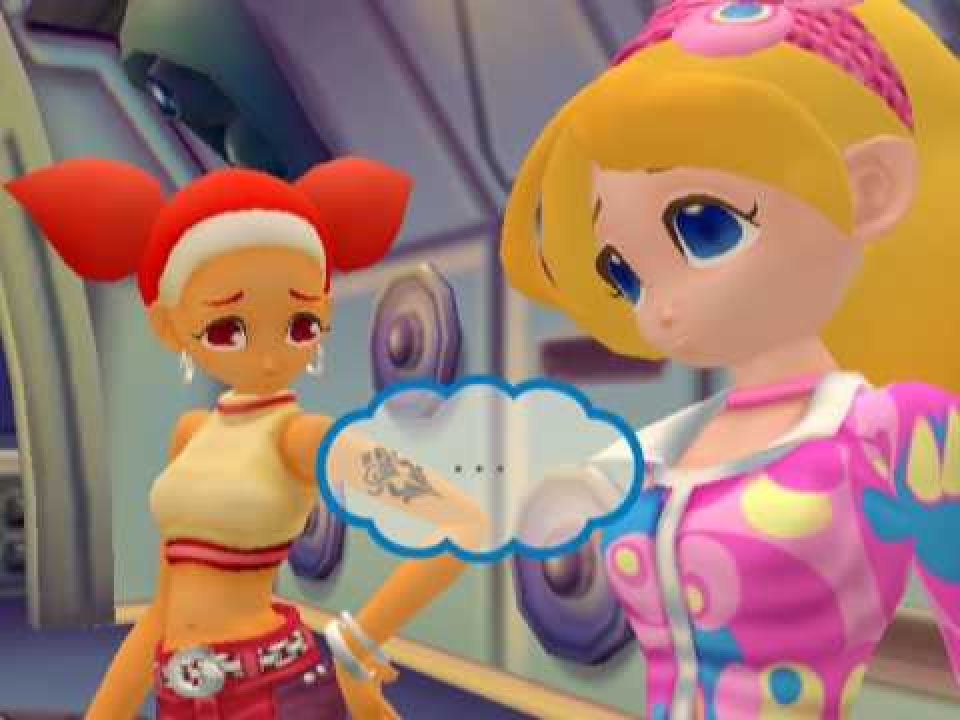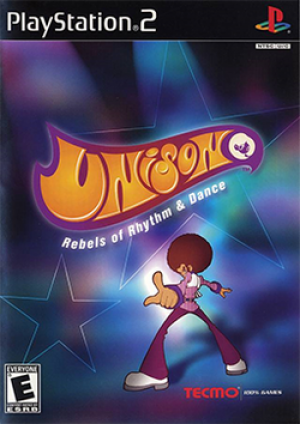

Platform: Sony Playstation 2
Region: Region Not Set
Developer(s): Tecmo
Publishers(s): Tecmo
ReleaseDate: 2001-03-22
Players: 2
Co-op: No
Unison: Rebels of Rhythm & Dance
Unison: Rebels of Rhythm & Dance (sometimes known as simply Unison) is a rhythm video game released for the PlayStation 2 in 2000 which featured unique controls and, at the time, beautiful graphics for its genre of game. It is heavily inspired by J-pop, anime and the formation of musical girl groups. The game's plot, taking place in the futuristic city of Twin Ships, centers around the exploits of three girls - Trill, Cela and Chilly - and mascot Friday as they struggle against the dictatorship of a man known only as Ducker, who can use his voice to exert a hypnotic influence over people and only allow them to experience his peculiar brands of fun, which has outlawed anything creative aside from his own music; dancing, in particular, is especially prohibited. Gathered together by a man known as Doctor Dance - who happens to dress in what passes as stereotypical 1960s attire and possesses a large afro - the three girls form the musical dance group Unison, and set about putting on a series of performances over Twin Ships' airwaves to rally the public to their cause and bring dancing back to the people. In opposition of Unison are Ducker and his personal servants who routinely try to capture the girls. At the start of the game, players choose whether to directly control any one of the girls: Trill, Cela or Chilly. This choice roughly corresponds to a difficulty selection - Trill is Normal, Cela is Hard and Chilly is Very Hard. Once a story cutscene has introduced the song to be performed in the next act, the game moves into a practice session to teach the player the movements necessary to successfully pull off the performance. Movements are accomplished by following the on-screen markers using the PS2's analog sticks to mimic the motions of arms and legs throughout a dance; if a character on the screen is waving their right arm, the movement is likely accomplished by rolling the right analog stick like a waving arm. For the practice session, the song can either be learned in its entirety, or in portions. In the original Japanese release, songs had to be successfully learned in parts, and then as the entire number before moving on. The US release made this process much simpler by allowing the player to keep the markers present throughout the entire game; in the Japanese version, these would progressively be taken away, meaning the player had to commit the dances to memory, making the practice session much more necessary. In either version, the game contains a total of twelve songs that can be played in "Club Tecmo" mode ("Club Afro" in the Japanese version) with up to three players by using a PS2 multitap. The song lists have some differences between the versions.
ESRB Rating: E - Everyone
Genre(s): Music



